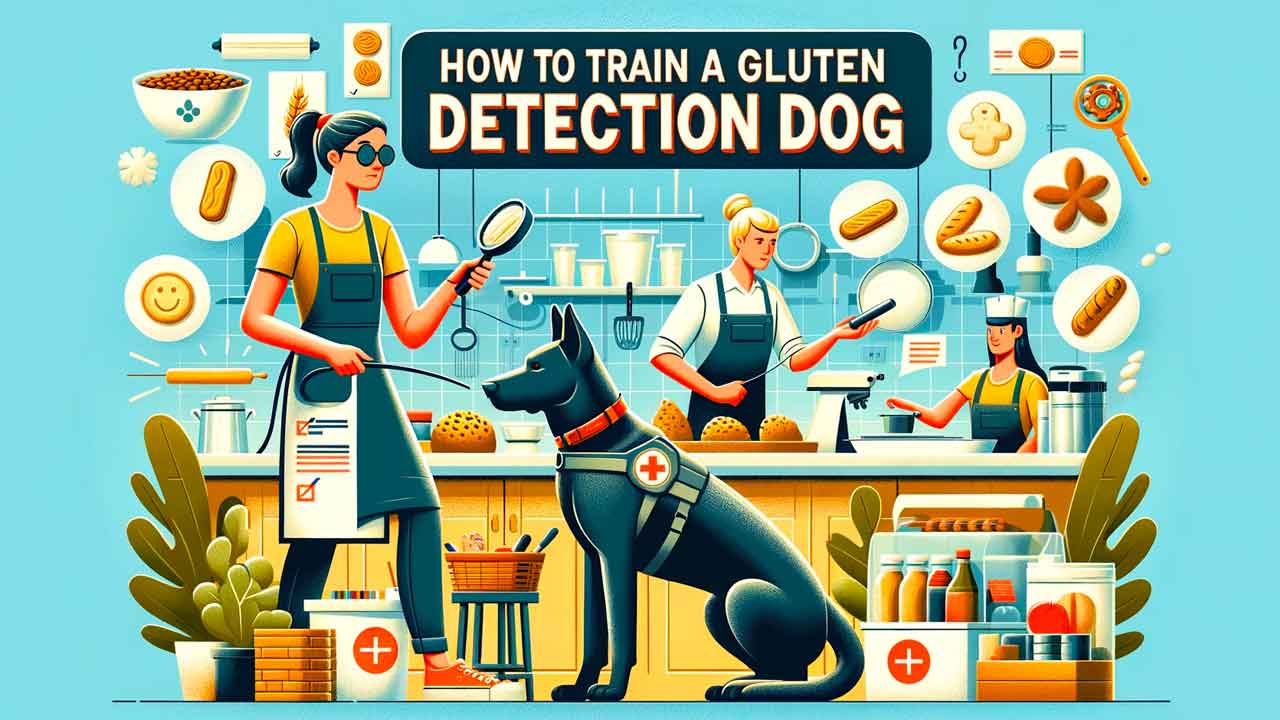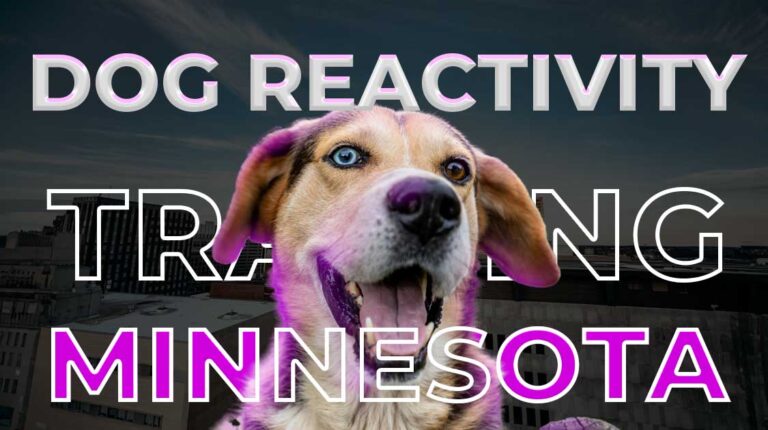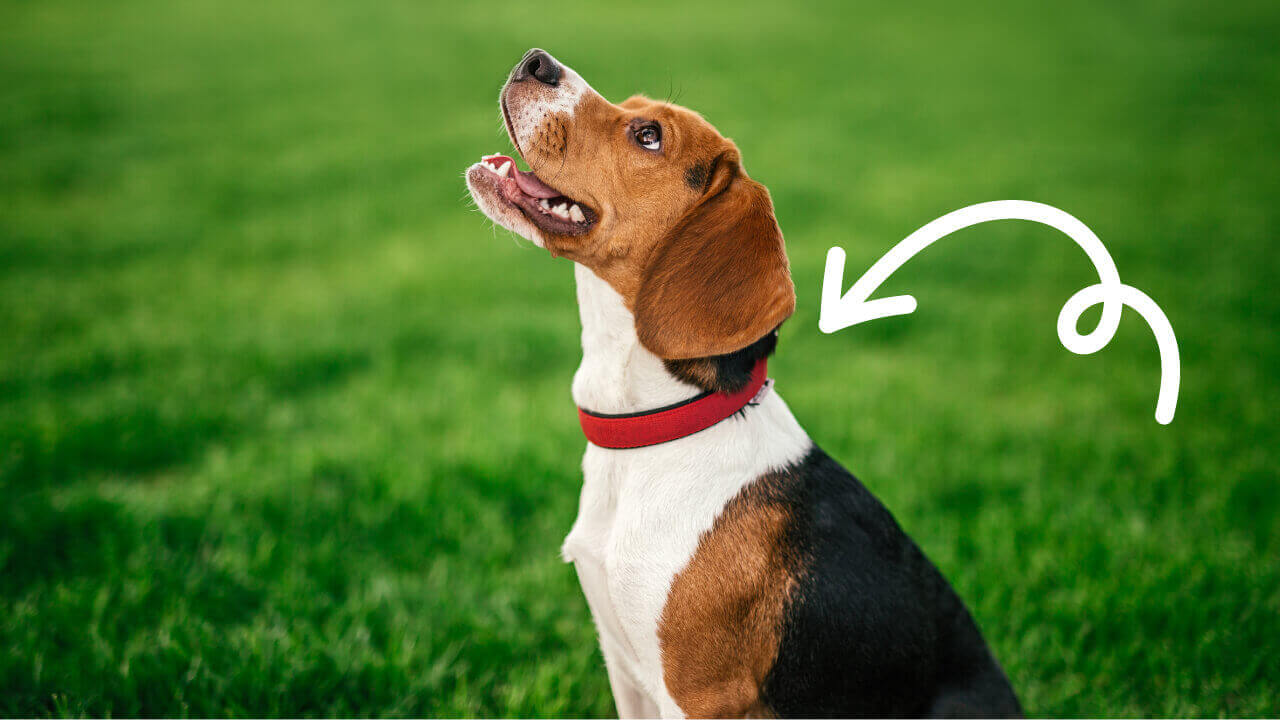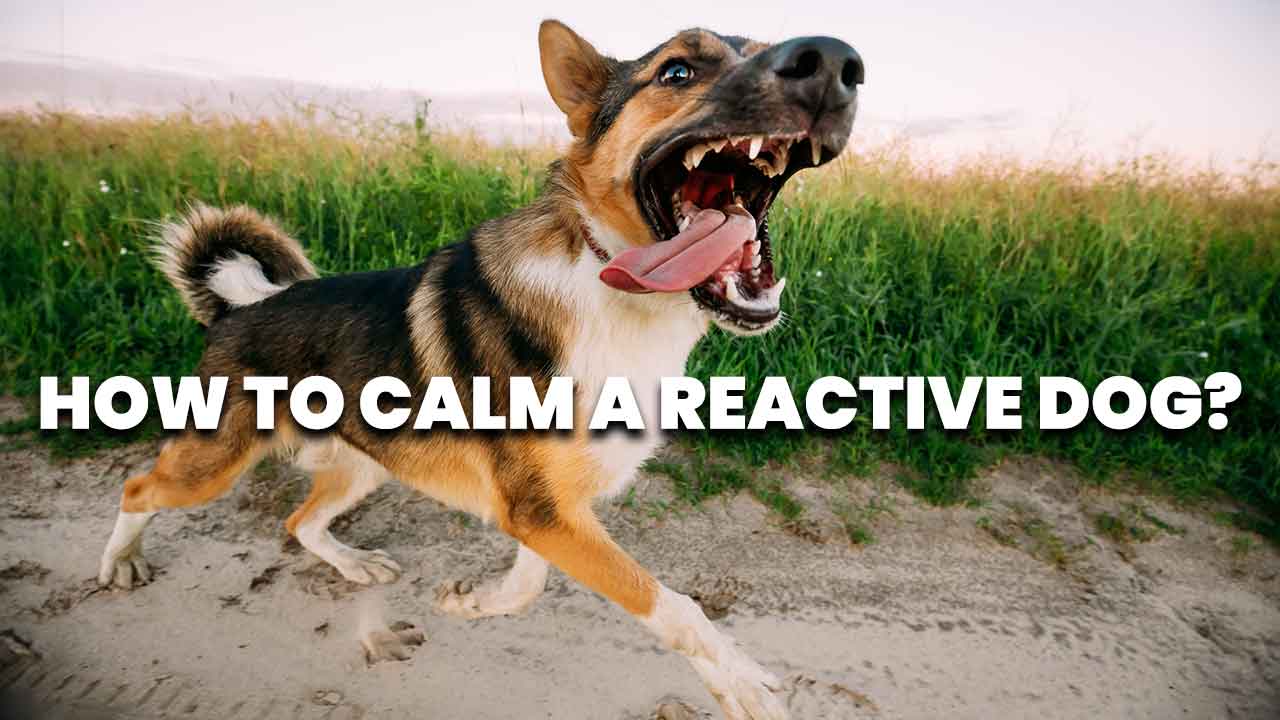How to Train a Gluten Detection Dog: Avoid Gluten Poisoning
Table of Contents
Key Takeaways:
| Key Point | Description |
|---|---|
| Understanding Gluten Detection Dogs | Dogs trained to identify the presence of gluten, crucial for people with gluten intolerances. |
| Benefits | Helps individuals with celiac disease or gluten sensitivity avoid gluten-containing products. |
| Ideal Candidates | Best for those with severe gluten allergies or celiac disease. |
| Selecting the Right Dog | Focus on a dog's breed, temperament, health, and ability to learn scent detection. |
| Training Process | Involves positive reinforcement and specialized scent detection methods. |
| Troubleshooting and Tips | Includes being patient, consistent, using high-value rewards, and ensuring fun, diverse training. |
How to Train a Gluten Detection Dog?
To train a gluten detection dog, start with a breed known for a strong sense of smell and a keen ability to focus, such as Labradors or German Shepherds. Begin with basic obedience training to ensure the dog responds to commands and can maintain concentration. Once basic obedience is established, introduce gluten detection training using positive reinforcement methods. Begin by presenting gluten samples in a controlled setting, rewarding the dog with treats or praise for correctly identifying gluten.
Is Your Dog Covered?
Get Peace of Mind with the Best Pet Insurance of 2024
As the dog becomes proficient in detecting gluten, increase the complexity of training by introducing different gluten-containing products and practicing in varied environments, such as at home, in stores, or public spaces. This helps the dog adapt to detecting gluten under different conditions and reduces the risk of false alerts.
Effectiveness of Gluten Detection Dogs in Different Environments
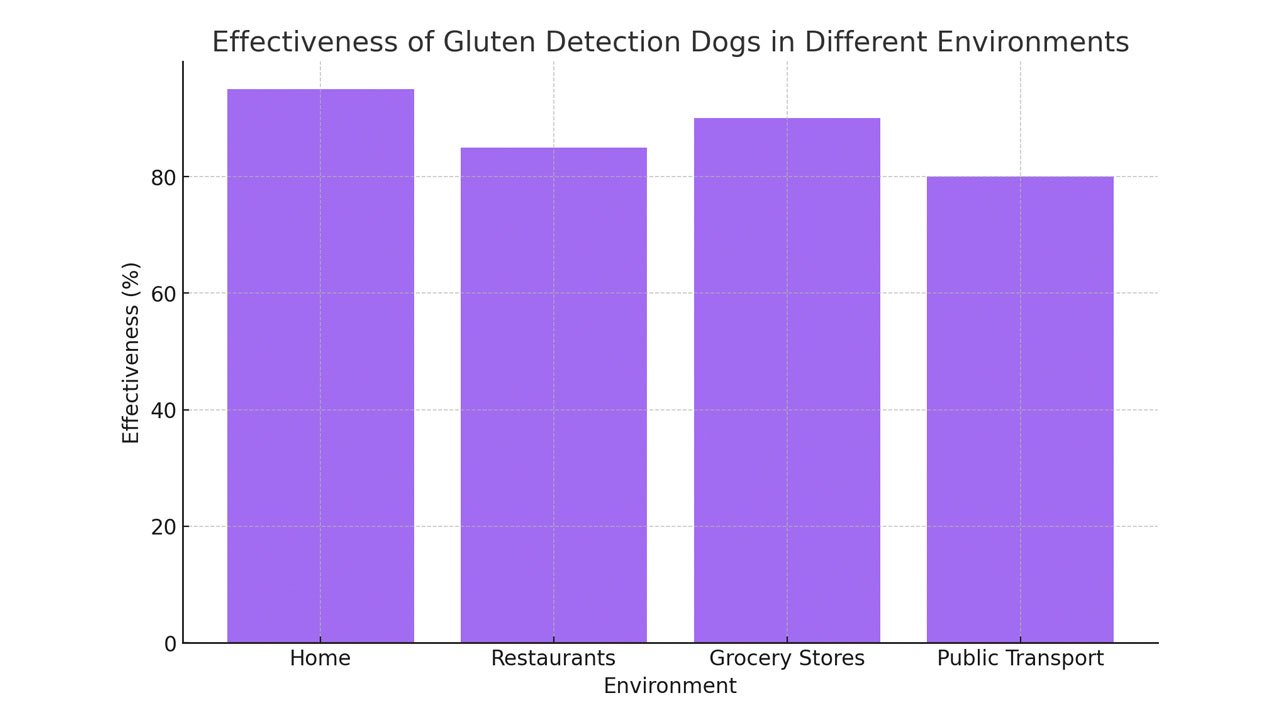
The bar chart above provides a hypothetical visualization of the effectiveness of gluten detection dogs in different environments, such as homes, restaurants, grocery stores, and public transport. Each bar represents an environment with the corresponding effectiveness percentage. This chart illustrates how these specially trained dogs perform in various settings, highlighting their reliability in detecting gluten and ensuring the safety of individuals with gluten sensitivities or celiac disease in diverse scenarios.
Introduction
Training a gluten detection dog is a transformative process, especially crucial for individuals with celiac disease or severe gluten allergies. These dogs are expertly trained to sniff out gluten in various forms, making them indispensable for those sensitive or allergic to gluten. In this comprehensive guide, we will explore the journey of training a gluten detection dog, from selecting the right canine to mastering the training techniques and troubleshooting common problems. Now, let's learn some deep information about how to train a gluten detection dog?
What is a Gluten Detection Dog?
A gluten detection dog is specifically trained to detect gluten, a protein present in wheat, barley, and rye. For individuals with celiac disease or severe gluten intolerance, inadvertent consumption of gluten can lead to serious health complications. Gluten detection dogs use their acute sense of smell to identify gluten in food and other products, helping to prevent accidental ingestion. These dogs are not only practical aids but also provide emotional support, enhancing the quality of life for their owners.
Benefits of Training a Gluten Detection Dog
The benefits of having a gluten detection dog are manifold. For those with celiac disease or gluten intolerance, these dogs are more than just pets; they are life-saving companions. They offer a reliable way to detect gluten in everyday items, significantly reducing the risk of accidental exposure. The presence of a gluten detection dog can alleviate the constant worry about gluten contamination, especially when eating out or trying new foods. This heightened level of safety can lead to increased freedom, confidence, and peace of mind.
Who Needs a Gluten Detection Dog?
Gluten detection dogs are particularly beneficial for individuals with celiac disease, an autoimmune disorder triggered by gluten, and those with non-celiac gluten sensitivity. For these individuals, avoiding gluten is not just a dietary preference but a necessary measure for maintaining health and well-being. A gluten detection dog can be a game-changer, especially for those who react severely to even trace amounts of gluten. It can also be a valuable resource for parents of children with gluten intolerance, providing an extra layer of protection against gluten exposure.
How to Choose the Right Dog for Gluten Detection Training
Choosing the right dog for gluten detection training is critical. The ideal dog should have a keen sense of smell, be food-motivated, and possess a calm yet alert temperament. Breeds known for their scenting abilities, such as Labrador Retrievers, German Shepherds, and Belgian Malinois, are often good candidates. However, the dog's breed is less important than its individual characteristics and aptitude for scent work. It's also important to consider the dog's health and age; younger dogs often learn more quickly, but older dogs can also be trained effectively.
Training a Gluten Detection Dog
Training a gluten detection dog involves a series of steps, starting with basic obedience and gradually introducing gluten scent detection. The training process is meticulous and requires patience and consistency. It typically begins with teaching the dog to identify and respond to the scent of gluten. Once the dog learns to recognize the scent, the training progresses to more complex scenarios, like detecting gluten in various environments and differentiating gluten from other smells.
The Basics of Positive Reinforcement Training
Positive reinforcement is the cornerstone of gluten detection dog training. This approach involves rewarding the dog for correctly identifying gluten, thereby encouraging the desired behavior. Rewards can include treats, praise, or playtime. The key is to make the training experience positive and enjoyable for the dog, which enhances learning and strengthens the bond between the dog and the trainer.
How to Teach Your Dog to Scent Gluten
Teaching a dog to scent gluten involves introducing the dog to gluten-containing substances in a controlled environment. Start with small amounts of gluten and gradually increase the complexity of the training exercises. It's essential to use actual gluten-containing products rather than synthetic scents to ensure accuracy. Regular practice and reinforcement are crucial for the dog to reliably detect gluten.
How to Generalize the Gluten Detection Behavior
Generalizing the gluten detection behavior means training the dog to detect gluten in various settings and under different conditions. This involves practicing in different environments, such as at home, in public places, and during meals. The goal is to ensure the dog can perform reliably, regardless of the surroundings or distractions.
How to Troubleshoot Common Problems
Common problems in gluten detection dog training may include distractions, inconsistent detection, or loss of interest. To address these issues, it's important to evaluate the training methods and environment. Reducing distractions, increasing the value of rewards, and varying the training routine can help overcome these challenges. Consistency and patience are key in resolving training problems.
Tips for Success
Successful gluten detection dog training hinges on several factors:
- Be Patient and Consistent: Training takes time and effort. Consistency in commands and rewards is essential for effective learning.
- Use High-Value Rewards: Find rewards that motivate your dog, such as favorite treats or toys, to reinforce positive behavior.
- Make Training Fun: Keep training sessions short, engaging, and enjoyable for your dog to maintain interest and motivation.
- Socialize Your Dog to Different Environments: Expose your dog to various settings to build confidence and adaptability in detecting gluten in any situation.
Conclusion
Training a gluten detection dog is a rewarding yet challenging journey. These special dogs provide invaluable assistance to individuals with gluten intolerance, offering safety and peace of mind. By following the outlined training methods and tips, you can effectively train a dog to be a reliable gluten detection companion. Remember, the key to successful training lies in patience, consistency, and positive reinforcement.
Read more about Training Dogs as Service Animals
Resources for Further Information
For more information on gluten detection dog training, visit the following resources:

